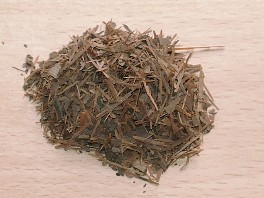 The inner bark of the Lapacho tree was an allround remedy of the Incas.
Today local South Americans also use Lapacho against all kinds of diseases.
Not until in the second half of the twentieth century Lapacho was discovered
by the researchers and medical doctors of the occident.
In Europe, Lapacho is rather unknown, but in North America, it is a fashion remedy.
The inner bark of the Lapacho tree was an allround remedy of the Incas.
Today local South Americans also use Lapacho against all kinds of diseases.
Not until in the second half of the twentieth century Lapacho was discovered
by the researchers and medical doctors of the occident.
In Europe, Lapacho is rather unknown, but in North America, it is a fashion remedy.
Some praise Lapacho as a kind of miracle cures that can control even cancer other assume a pure placebo effect from the Lapacho tea.
The effect against cancer is very controversial because although the inner bark of the Lapacho tree contains active agents that can help against cancer but if one dosed Lapacho tea sufficiently strongly so that these substances could work, one would suffer from very strong side effects.
Its support for the immune system and the antibacterial effect are less controversial.
Therefore, a rich use spectrum also occurs without the hope for help against cancer for the Lapacho.
Medicinal Uses
- Immune system stimulating
- Colds
- Flu
- Malaria
- Fungicide
- antiviral
- Antibacterial
- Inflammation-inhibitory
- Causing perspiration
- Analgesic
- Calming
- Against Blood pressure
- Diuretic
- Insect stings
- Wounds
- Herpes
- Psoriasis
- Stimulates Digestion
Information
| Used Parts: | Inner bark |
| Substances: | Lapachol, potassium, calcium, iron, barium, strontium, iodine, boric |
| Other names: | Iperoxo, Pau d'arco, Taheebo |
Methods
One should be careful, using the Lapacho internal. Don't overdose Lapacho tea and don't drink it longer than six weeks without break.Pregnant women shouldn't drink Lapacho tea and use it only externally.
For the tea, 2 teaspoons of the inner bark are cooked on 1 liter of water for five minutes. Then the tea should rest another quarter of an hour before you drink it.
Of this tea, 1 liter per day (maximum 6 weeks then 4 weeks of break) is drunk.
The extrinsic application is not limited in time.
One can take Lapacho tea for ablutions and baths or soak clean cloths as compresses into the Lapacho tea.
Also as a component of ointments one can use Lapacho.
Plant description
The Lapacho tree is growing in the rain forests from Argentina, Paraguay, Brasil and other South American countries.It is an evergreen with red or purple blossoms. In some areas, it can get old up to 700 years.
The inner part of the cortex is used. The rest of the bark should not be used since it does not contain such valuable active agents.
After the harvest, the cortex of the Lapacho tree recovers quite fast. The tree does not suffer from any durable damage.
